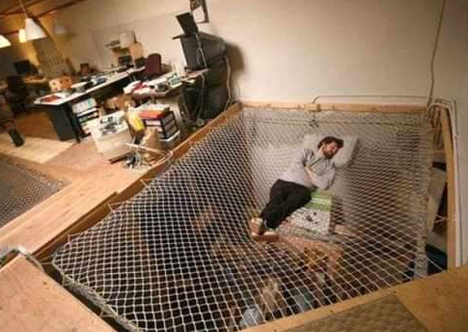So I started playing around with Sketchup this weekend. I first started to try and put a gambrel roof onto one of Michael Jansen's 20' Tiny House models. I wasn't sure where to put the roof supports, but then I realized that they go over the wall studs, right? So I started undoing the layers of the model to find the studs, but the model I have apparently doesn't have a frame. It is all exterior.
My next idea was to take Michael's Micro-Gambrel sketchup model, which is a full framed model but only 11' or so, and put it on a 20' trailer and stretch it to 20'. Well I did stretch it to scale, but that also stretched all the pieces of the frame, not just the distances between the studs. I realize that I am looking for a shortcut, a way to avoid building the model from scratch. But now I think that I would be missing out on the oppurtunity to learn basic building understanding. So now I am going to start from scratch, and build the frame one piece at a time, making groups and components along the way.. It will be slower, but I think well worth it.
Electrical
Here is a question: Can I use the Goal Zero Yeti 1250 Solar Generator to power my Tiny House, and should I?
The basics: The Yeti 1250 is a big battery, that you can plug lots of things into. It can be charged by plugging it into a regular outlet. But it can also be charged via solar panels. There is no limit to how many more batteries you can link to the system. The system can be charged by up to 8 of the company's 30 watt solar panels linked together, making 240 watts of solar panels, though the system can also be connected to other manufacturers solar panels, though it is not clear how much solar panel wattage is possible with other panels (more than 240 watts?). Let's assume that however much electricity I use is covered by the Yeti +extra batteries+solar panels.
Outputs
| 3 x AC standard US outlets 110V AC 60Hz pure-sine wave, 1200W max total continuous, 1500W max short-duration | ||
| Female 12V port 11-14V, 10A max (120@), unregulated | ||
| 2 x 6mm 12V ports 11-14V, 6A max each (72W), unregulated | ||
| 12V Power Pole port 12-14V, 30A max (360W), unregulated | ||
| 3 x USB ports 5V, 1.5A mx (7.5W) each, regulated I am a very ignorant of electrical stuff right now, so other than the standard AC outlets and the USB ports, I don't know what the other ones are for. The red and orange boxes you see below. I see two car lighter sockets, than that big one, and the orange box. What are they for?  |
Now according to the company, this device can be used continuosly, not just for backup or singular events like camping. So seemingly, I could use this to power my electrical needs in my Tiny House.
Why would I want to use this? Well what is the other option? A service panel, with circuit breakers powered by a landline cable (someone else's electricity). I could add to that system solar panels and batteries and whatever else that implies. Of course, either way I am still going to be doing wiring for lighting, appliances etc.( Can I use this system for a wired house? Not just individual appliances, but lighting, light switches, power strips, etc?)

To me, this just seems easier . One device, that does both landline electric, and solar, and I can add more batteries and panels. Also, I have heard that Electrical systems can be expensive, and that it is reccomended that you should get an electrician to do all the work. The Yeti would leave only the wiring for me to do. Though I do see a possible issue of finding myself having put all my eggs in one basket. What if it breaks? There is only a 12 month warranty on the thing as far as I know. I'm always looking for the easiest solution, but as we saw with my Sketchup story earlier, Easy isn't always Best. I would appreciate your input.
I leave you with this photo I found somewhere online. I thought something like this would be nice as an extension of the sleeping loft.

No comments:
Post a Comment